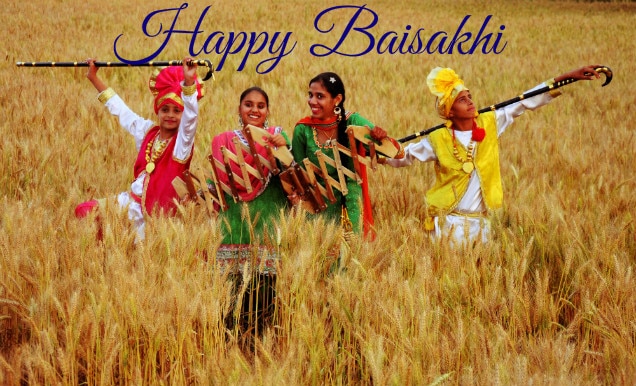
The Punjabi New Year, Baisakhi is a way of showing gratitude towards God for a good harvest season. Vaisakhi is also celebrated on the same day with pomp and fervour marking Khalsa Panth, which was established by the tenth Sikh leader, Guru Gobind Singh Ji. After Guru Gobind Singh declared that the Granth Sahib, the holy scripture of Sikhs to be treated as the everlasting Guru, Sikhs started celebrating Vaisakhi.
The guru selected five brave leaders from among his followers and came with the order of Khalsa Panth. Baisakhi is a harvest festival, which is celebrated every year on April 13 or April 14. It is also considered as the commemoration of brotherhood in Sikhism (Khalsa). In the year 1699, Guru Gobind Singh, decided to break off the practice of Sikh Gurus.(READ-Happy Tamil New Year 2015: All you need to know about the Tamil ‘Puthandu’)
On Vaisakhi, the scriptures of Grant Sahib are read out after being placed on a Takht (throne). The ritual is followed by distributing of prasad called Kada Prasad. Baisakhi is celebrated with traditional dance forms like Bhangra and Gidda, folk music, feasts and fairs. Golden temple, the famous Sikh’s place of worship is decorated on the day. Fairs called Baisakhi fairs are also organised in the state which includes dances, wrestling bouts, acrobatics and other enter dancing and singing are the core elements of the festival for Punjabis.
Marking the festival, devotees visit Gurdwara for special prayers in Gurudwara Anandpur Sahib or at the Golden Temple. The Holy Book is taken for a parade called Nagar Kirtan during mid-day with dance and devotional songs. This day is celebrated in different ways with various names and cultures in different parts of the country. In Bengali it is called ‘Noboborsho’ while the Assamese call it ‘Rongali Bihu’, ‘Puthandu Vazhthukal’ in Tamil Nadu, ‘Vaisakha’ in Bihar and ‘Vishu’ in Kerala.





